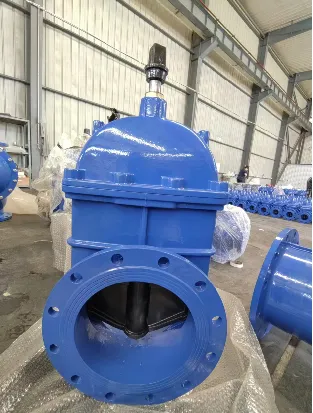Epoxy Coated Butterfly Valves for Enhanced Durability and Performance in Fluid Control Systems
Epoxy Coated Butterfly Valves A Comprehensive Overview
Butterfly valves are essential components in various industrial applications, widely used for regulating fluid and gas flow due to their simple design, ease of operation, and efficient sealing capabilities. Among the various types of butterfly valves available, epoxy-coated butterfly valves stand out as a preferred choice in environments where corrosion resistance and durability are critical.
Understanding Butterfly Valves
Butterfly valves consist of a rotating disc or wing that opens and closes by turning a lever or actuator. When the valve is fully open, the disc is parallel to the flow, allowing for minimal resistance. In contrast, when it is closed, the disc blocks the flow, providing tight sealing. This design makes butterfly valves particularly effective in applications that require quick and frequent valve operation.
The Importance of Coatings
The performance and longevity of butterfly valves can be significantly enhanced through protective coatings. Epoxy coatings, in particular, offer superior resistance against corrosion, abrasion, and chemical attacks, making them ideal for harsh operational environments. Traditional material options, such as cast iron or carbon steel, can suffer from degradation when exposed to moisture, chemicals, or various operating conditions. Epoxy-coated surfaces effectively mitigate these risks by providing a robust barrier.
Benefits of Epoxy Coated Butterfly Valves
1. Corrosion Resistance Epoxy coatings create a protective layer that prevents rust and deterioration. This is particularly important in applications involving corrosive substances or environments, such as wastewater treatment, chemical processing, and marine applications.
2. Durability The inherent toughness of epoxy materials enhances the valve's resistance to mechanical stress and impact. This durability translates to lower maintenance costs and extended service life, which is crucial for industrial operations.
epoxy coated butterfly valves

3. Versatility Epoxy-coated butterfly valves can be utilized in a wide range of applications due to their ability to handle different fluids, including water, chemicals, and gases. They are suitable for both high-temperature and cryogenic applications, broadening their utility across industries.
4. Improved Flow Characteristics The streamlined design of butterfly valves, combined with the smooth surface provided by the epoxy coating, minimizes turbulence and pressure drop, promoting better flow characteristics. This efficiency is vital for energy savings and optimal operation in fluid systems.
5. Ease of Installation and Maintenance Epoxy-coated butterfly valves are generally easy to install and require less frequent maintenance compared to uncoated alternatives. Their lightweight nature allows for simpler handling during setup and replacement.
Applications of Epoxy Coated Butterfly Valves
These valves are used extensively in multiple industries. In the water and wastewater sector, they play a crucial role in controlling the flow of water and sewage. In the chemical industry, they regulate the transport of potentially hazardous liquids and gases. Furthermore, in HVAC systems, they manage airflow and temperature, contributing to energy efficiency and environmental control.
Conclusion
Epoxy-coated butterfly valves represent a significant advancement in valve technology, combining traditional design with modern protective coatings to enhance performance and reliability. Their advantages, such as corrosion resistance, durability, and versatility, make them an indispensable choice for various industrial applications. As industries continue to seek efficient and long-lasting solutions to fluid control, epoxy-coated butterfly valves are poised to play a vital role in ensuring operational efficiency and reducing overall maintenance costs.
By investing in high-quality epoxy-coated butterfly valves, industries can optimize their processes while ensuring sustainability and safety in their operations. Choosing the right valve for specific applications will not only enhance functionality but also contribute to the long-term success of industrial projects.
-
The Smarter Choice for Pedestrian AreasNewsJun.30,2025
-
The Gold Standard in Round Drain CoversNewsJun.30,2025
-
The Gold Standard in Manhole Cover SystemsNewsJun.30,2025
-
Superior Drainage Solutions with Premium Gully GratesNewsJun.30,2025
-
Superior Drainage Solutions for Global InfrastructureNewsJun.30,2025
-
Square Manhole Solutions for Modern InfrastructureNewsJun.30,2025
-
Premium Manhole Covers for Modern InfrastructureNewsJun.30,2025
